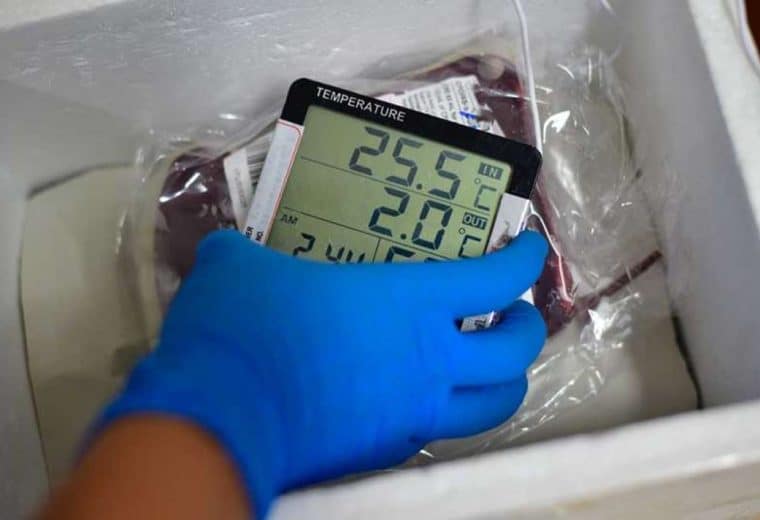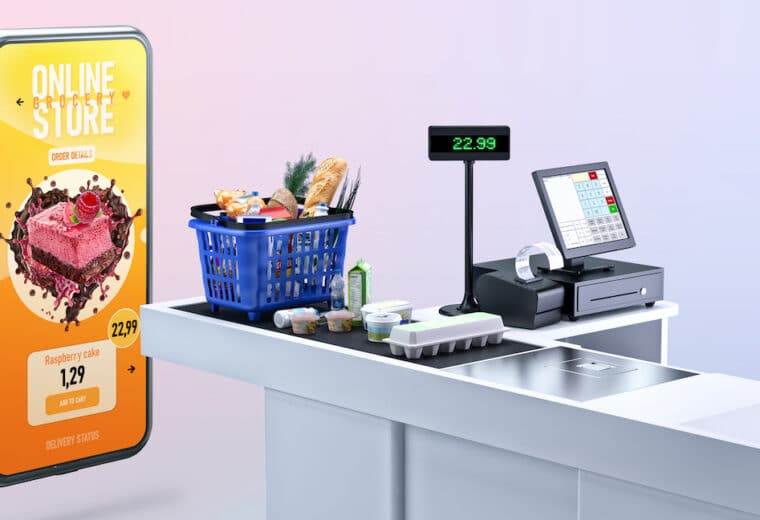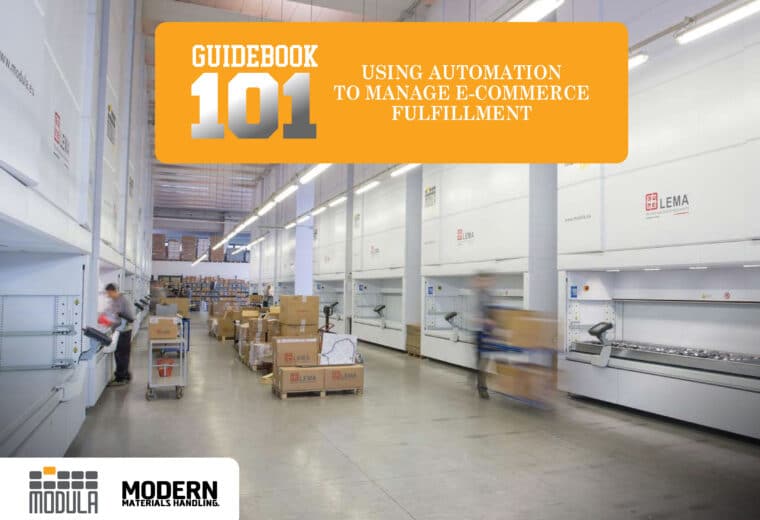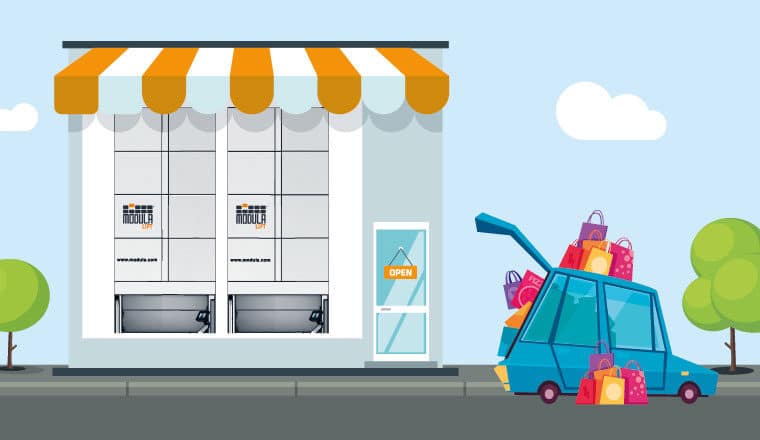Optimizing e-grocery logistics with automated storage and retrieval systems
Flexible, cost-efficient, data-driven, automated storage & retrieval systems play a key role in e-grocery logistics & warehouse management, helping grocery retailers to stay ahead of today’s–and tomorrow’s–trends.
When we talk about online shopping, we’re usually focusing on items such as clothing, books, electronics, music, and cosmetics. Besides these, there’s another goods category that has experienced rapid growth in online sales recently: food. In fact, there’s a new term to describe this phenomenon: e-grocery. This is defined as the online purchase of goods in the Food & Grocery sector. From fresh and dry food products to household products, or those consumer goods traded through the retail channels.
In this article, we analyze the expansion of e-grocery in the past several months and the importance of warehouse logistics for the evolution of online food shopping.
The global trends of online Food & Grocery
The trends vary for technological, social, and cultural reasons, but overall the data suggests widespread adoption of e-grocery activity worldwide. Citing research by the Kantar Group, digitalcommerce360.com reports that in 2020 there was not merely a global explosion of e-grocery but also a notable psychological impact on consumers, making them more inclined to online purchasing compared to the previous years due to the pandemic. While in 2019 online sales of food products had increased by 22% worldwide on an annual basis, in 2020, by the end of April, online sales of food products worldwide registered increased by 12.4% compared to 8.8% growth in the same period of 2019 (source: digitalcommerce360.com, Kantar Group).
In 2020, the Ocado Group (one of the pioneering UK groups in the online grocery market) recorded a 27% jump in its six-month retail revenues compared to 2019 (source digitalcommerce360.com). Walmart said it recorded a 74% increase in e-commerce sales in the first quarter, adding that the pandemic encouraged its customers to choose online purchasing with curbside pickup of groceries outside the physical store.
As emarketer.com explains, the change is also driven by the development of new solutions for the delivery of purchased goods. Compiling an initial ranking based on data taken from an analysis of U.S. buyers (“The eMarketer Ecommerce Survey,” June 2020, Bizrate Insights), in-store order pickups increased from 18% in February 2020 to 22% in June 2020. Remote pickup or curbside pickup at the store went from 7% to 22% in the same time period. According to a study of the American market published in SDC Supply & Demand Chain Executive, among the future drivers of the increase in e-grocery will be the consolidation in the coming years of the online shopping habits established during the pandemic and the possibility of choosing between multiple types of delivery (home delivery, in-store pick-up, locker delivery, curbside pickup, and others).
Managing the logistical needs of e-grocery
Given the pandemic’s sudden transformation in consumer shopping habits, the retail distribution needs solutions that address the logistical implications of this shift. At the moment, different responses coexist. Traditional supermarkets have customers mixing with pickers (employees who physically “prepare” the orders placed online). There are also dark stores, which are essentially supermarkets restricted to pickers only.
We are therefore experiencing a noticeable evolution in warehouse logistics and picking for large-scale distribution. So how should grocery stores respond? It is necessary to evaluate the available alternatives and carefully choose the solution that best fits the business’s needs. A hasty choice may waste time and resources and provide an inadequate response to changing conditions and needs.
Logistics in e-grocery: from resource optimization to internal reorganization
The digitalization of logistics processes and the advent of new warehouse management systems are joined by the development of micro-fulfillment centers (MFCs), that is, centers with a maximum size of 1,800 square feet (550 square meters) located in urban areas and specialized in the preparation and fulfillment of online orders. These centers were created to meet the need for a faster management of deliveries, which can even take place on the same day as the order.
The transformation of consumer habits is reflected in more options for shoppers. Now even the pick-up of an order has become multi-channel:
- Click & Collect: previously ordered groceries are picked up without consumers getting out of their vehicles or in the store itself, also known as BOPIS (Buy Online Pick Up In-Store)
- Drive & Collect: goods are purchased online and picked up at a distribution warehouse within a set time
- Home Delivery: goods are delivered to the customer’s home
- Contactless Delivery: goods are delivered to the home without interaction between the delivery person and the customer
Modula automated storage and retrieval systems for e-grocery logistics management
Today Modula is able to offer a range of warehouse management solutions designed to fully meet the needs of customers in the large-scale retail trade and the e-grocery market. Modula’s logistics management systems stand out due to three characteristics: modularity, cost optimization, and a gradual introduction of automation. To be specific about each characteristic:
- Modularity: Modula offers systems that can be adapted to the different needs of the customer in terms of both size and functions (for example, vertical storage systems and new horizontal carousels, or temperature-controlled automated storage systems)
- Cost optimization: Choose a system based on priorities, starting from the specific needs of the company and developing a customized, efficient and high-performance system
- Gradual introduction of automation: Thanks to those solutions that integrate manual and automated systems (“hybrid” solutions), companies can maintain the human factor as part of the shift, lowering the psychological barrier that customers might experience in a fully automated system.

The technical advantages of Modula’s e-grocery logistics solutions
The Modula logistics management systems are the starting point in the evolution of the retail channels toward e-grocery. The main advantages of these automated storage systems developed by Modula for the e-grocery include:
- Easy and quick installation of automated vertical storage systems: Just one week is required to install a vertical storage system and this involves only limited disruption for operations and customer activity
- Easy integration with warehouse management software: The Modula WMS software and the grocery stores’ ERP systems communicate and interface seamlessly
- Integration with Modula picking systems and/or with materials handling systems, including robots or autonomous mobile robots (AMR), to achieve a “goods to person” picking approach and make the most of all its advantages
- Flexibility in picking: fast and efficient picking management, adaptable to different operators based on the volume of orders and work peaks
- Excellent management of fresh and dry food products, with temperature-controlled systems that allow adequate storage while keeping vulnerable items away from light, dust, and heat sources.
The e-grocery management of fresh products with Modula automated storage systems
Fresh produce management solutions deserve special attention. Modula designs and manufactures temperature-controlled automated storage systems, which maintain the internal temperature between 35.6°F and 77°F (2°C and 25°C). These systems are perfect for storing all fresh and dry products and fully meet the needs of large-scale distribution, where an average temperature of 40°F (5°C) is usually adopted for the preservation of these types of goods. Furthermore, temperature-controlled automated storage systems can be cheaper than traditional refrigeration systems.
Modula’s temperature-controlled automated storage systems can be used in different phases:
- in the order preparation phase (for example, pickers who work in dark stores): With an automated storage system, the preparation of orders becomes more efficient and faster
- in the prepared order storage phase: Prepared orders can be stored in optimal conditions, pending pick up by the customer or home delivery.
The increase of online options by retailers has paved the way for a more mature management of warehouse logistics and the use of new systems for the storage and preservation of goods, increasingly oriented towards efficiency and performance.





